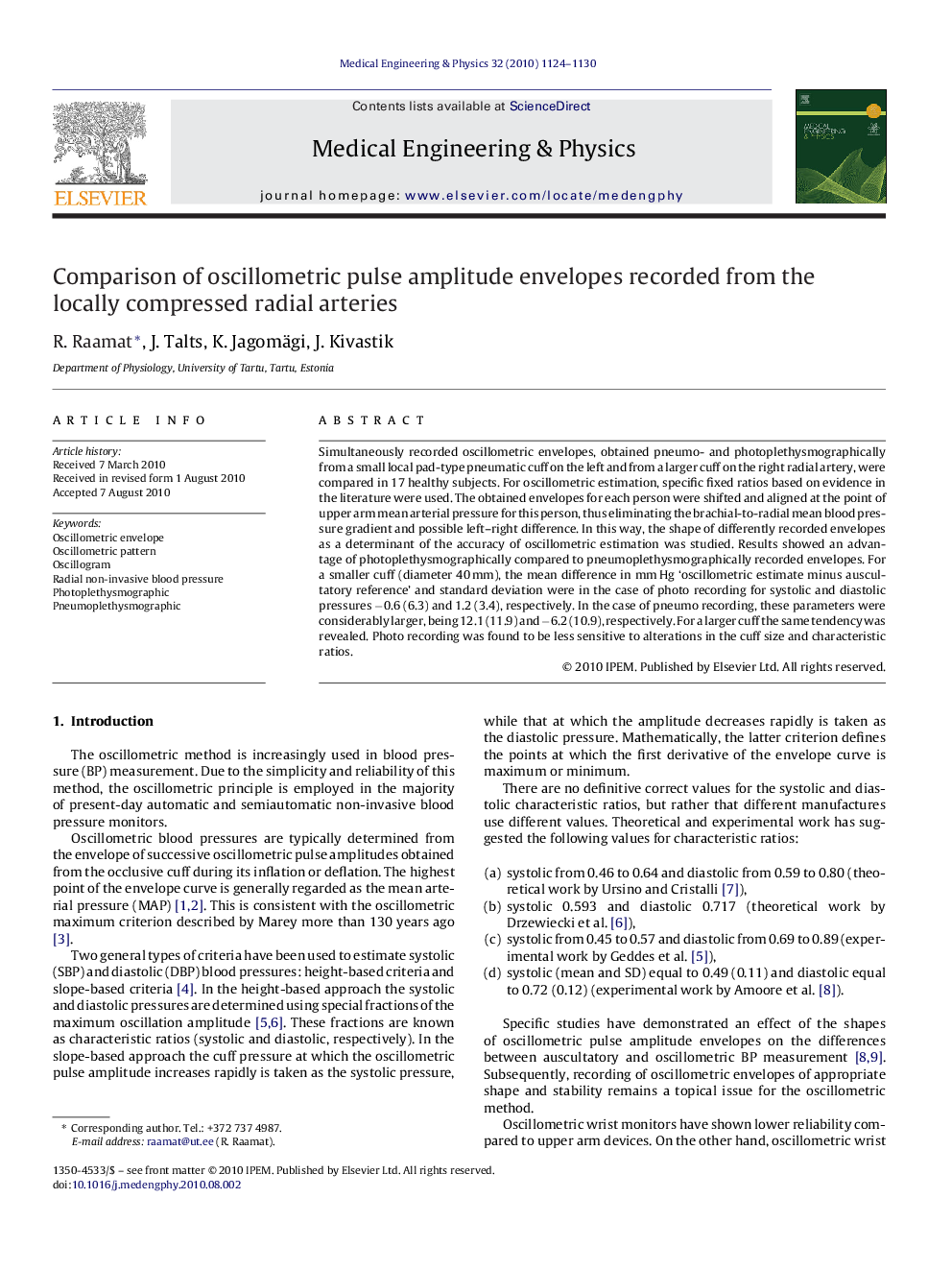| Article ID | Journal | Published Year | Pages | File Type |
|---|---|---|---|---|
| 876960 | Medical Engineering & Physics | 2010 | 7 Pages |
Simultaneously recorded oscillometric envelopes, obtained pneumo- and photoplethysmographically from a small local pad-type pneumatic cuff on the left and from a larger cuff on the right radial artery, were compared in 17 healthy subjects. For oscillometric estimation, specific fixed ratios based on evidence in the literature were used. The obtained envelopes for each person were shifted and aligned at the point of upper arm mean arterial pressure for this person, thus eliminating the brachial-to-radial mean blood pressure gradient and possible left–right difference. In this way, the shape of differently recorded envelopes as a determinant of the accuracy of oscillometric estimation was studied. Results showed an advantage of photoplethysmographically compared to pneumoplethysmographically recorded envelopes. For a smaller cuff (diameter 40 mm), the mean difference in mm Hg ‘oscillometric estimate minus auscultatory reference’ and standard deviation were in the case of photo recording for systolic and diastolic pressures −0.6 (6.3) and 1.2 (3.4), respectively. In the case of pneumo recording, these parameters were considerably larger, being 12.1 (11.9) and −6.2 (10.9), respectively. For a larger cuff the same tendency was revealed. Photo recording was found to be less sensitive to alterations in the cuff size and characteristic ratios.
